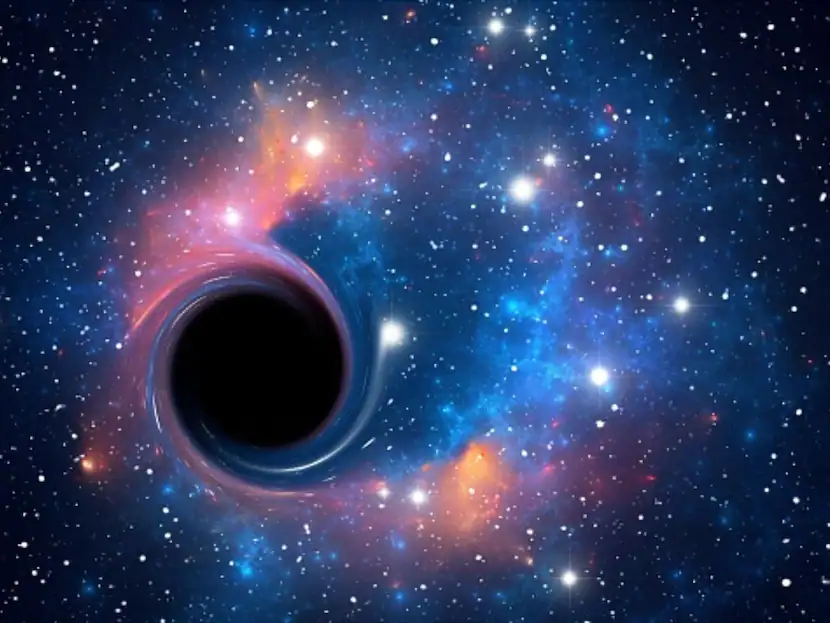[ad_1]
A team of astronomers have discovered that jets, which are beams of matter ejected from astronomical objects, significantly change the internal and external pressure of molecular clouds in their path. The astronomers measured the gas pressure in jet-impacted clouds and ambient clouds by modelling several emission lines in Atacama Large Millimeter Array (ALMA) and Very Large Telescope (VLT) observations.
The study describing the results was recently published in the journal Nature Astronomy.
Page Contents
Triggering And Delaying Of Star Formation Possible In The Same Galaxy
Both compression of clouds and triggering of star formation and dissipation of clouds and delaying of star formation are possible in the same galaxy, depending on whether the internal pressure or the external pressure in molecular clouds changes the most.
ALSO READ: Team Of Astronomers Called ‘Black Hole Police’ Discovers Dormant Black Hole In Large Magellanic Cloud
In a statement released by University of Cologne, Professor Kalliopi Dasyra of the National and Kapodistrian University of Athens said the study results show that supermassive black holes, even though they are located at the centres of galaxies, could affect star formation in a galaxy-wide manner. She added that studying the impact of pressure changes in the stability and of clouds led to the success of this project. She explained that once a few stars actually form in a wind, it is usually very hard to detect their signal on top of the signal of all other stars in the galaxy hosting the wind.
How Supermassive Black Holes Help In Star Formation
Supermassive black holes are believed to lie at the centres of most galaxies in the universe. After particles infalling into supermassive black holes are trapped by magnetic fields, they can be ejected outwards and travel far inside galaxies in the form of enormous and powerful jets of plasma. According to the University of Cologne, these jets are often perpendicular to galactic disks.
ALSO READ: Astronomer Creates Breathtaking Image Of ‘Phantom Galaxy’ Using Data From James Webb Space Telescope
However, IC 5063 is a galaxy 156 million light years away from Earth, in which the jets are propagating within the disk, and are interacting with cold and dense molecular gas clouds. As a result of this interaction, compression of jet-impacted clouds may take place. This leads to gravitational instabilities and subsequently star formation as a result of gas condensation.
The astronomers used the emission lines of carbon monoxide (CO) and formal cation (HCO+) provided by ALMA, and the emission lines of ionised sulphur and ionised nitrogen provided by VLT, to conduct the experiment. The team used certain techniques to determine the environmental conditions in the outflow and in the surrounding medium.
Why Should Astronomers Know About Environmental Conditions In And Around Molecular Clouds?
It is important to know about these environmental conditions because they contain information about the strength of the far-ultraviolet radiation of stars. They also provide information about the rate at which relativistic particles, that have a speed close to that of light, ionise the gas in the molecular clouds.
Environment conditions also tell astronomers about the mechanical energy deposited on the gas by the jets. By narrowing down these conditions, the astronomers obtained information about the densities and gas temperatures that described different parts of the galaxies. This knowledge was used to determine the internal and external pressures.
Dr Thomas Bisbas, a co-author on the paper, said the astronomers have performed many thousands of astrochemical simulations to cover a wide range of possibilities that may exist in IC 5063.
Further Investigation Using James Webb Space Telescope
According to the study, the team did not measure pressures for a few locations in IC 5063. Instead, they created maps of the pressures in these regions and other quantities in the centre of the galaxy, allowing them to visualise how the gas properties transition from one location to another because of the jet passage. The astronomers aim to further investigate the pressure in the outer cloud layers, as probed by warm hydrogen, using the James Webb Space Telescope.
Professor Dasyra said the astronomers are truly excited about getting the JWST data because this will enable them to study the jet-cloud interaction at an exquisite resolution.
[ad_2]
Source link
